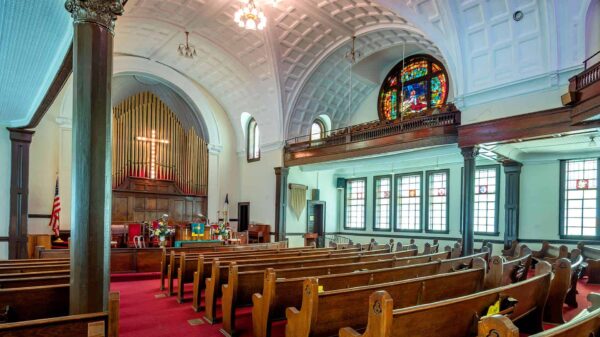|
Getting your Trinity Audio player ready...
|
Alabama’s Black Belt has all the ingredients to become a premier ecotourism destination, according to a report produced by a renowned ecotourism expert who conducted a detailed assessment of tourism development potential in the region.
The report, authored by Costas Christ and Associates, and including Beyond Green Travel and The University of Alabama Center for Economic Development, recommends that tourism planning and development in the Black Belt focus on the three pillars of Nature, Culture and Community. It also urges local communities throughout the Black Belt to collaborate and work together to foster economic development throughout the region’s 23-county footprint.
“By emphasizing the conservation of nature and protection of cultural and historic sites, along with local community engagement, the Black Belt can become a leading ecotourism destination,” said Christ, who is a former editor and senior director for sustainability for National Geographic and one of the world’s top travel experts. “The Black Belt is a diamond in the rough. It just needs some polishing.”
Christ and his team produced the 80-page report after spending a year traveling throughout the Black Belt to assess the region’s current and potential tourism assets, and conducting more than 100 meetings with business owners, government officials, civil rights leaders and community-based tourism organizations. He presented the report, which outlines action items that can be accomplished in the next 12 to 18 months to grow Black Belt tourism according to the principles of destination stewardship, to key stakeholders at Arts Revive in Selma earlier this week.
A similar report was prepared in 2022 for the Coastal Alabama Partnership, also led by Christ and his team, and many of those recommendations to promote ecotourism in Mobile and Baldwin counties have since been funded and put into action.
“What we’ve done on Alabama’s Gulf Coast has been successful, and there’s no reason to think we can’t enjoy the same success in Alabama’s Black Belt,” said Coastal Alabama Partnership President and CEO Wiley Blankenship. “These areas can complement each other and provide visitors with unique, memorable and authentic travel experiences based upon best practices.”
Ecotourism is defined as responsible travel to natural areas that protects nature and sustains the well-being of local people, and it continues to be one of the fastest growing sectors of the tourism industry.
Christ said Millennial and GenZ travelers seek experiences that benefit local people and help to protect natural and cultural heritage when selecting a travel destination. That has created increased demand for outdoor recreation, historic sites, culinary experiences, nature travel and community-led activities, all of which can be found in abundance throughout the Black Belt.
That’s a promising baseline for the region’s tourism efforts, and Christ’s report provides a roadmap for how to transform Black Belt tourism into a catalyst for economic development, including the city of Selma, with its civil rights history and surrounding natural and cultural sites, as the tourism capital for the region.
“The Black Belt offers world-class recreational hunting and fishing, along with other outdoor activities such as birding, camping and hiking,” said Thomas Harris, ALBBAA founder and president of the organization’s board of directors. “We also have world renowned cultural events and festivals, as well as many historical sites. This ecotourism report highlights the vast potential for drawing visitors to the Black Belt and making the region a nationally and internationally recognized sustainable tourism destination.”
In addition to the report identifying Selma as the Black Belt’s tourism capital, it also highlights Mobile and Montgomery as “gateway cities” for visitors interested in ecotourism, heritage and civil rights history.
Some of the sites the report identifies for funding to support tourism development include the Foot Soldiers Park and Education Center in Selma, The Joe Farm in Newbern, Fort Mims in Stockton, Old Cahawba Archaeological Park in Orrville, Roland Cooper State Park near Camden, and Gee’s Bend, home of the annual Airing of the Quilts Festival.
While the region faces unique challenges, the report also notes they can be overcome through strategic planning and collaboration involving government agencies, businesses, non-profit organizations and community leaders.
“I was excited to read the Black Belt Ecotourism Report. It is a good roadmap to capitalize on all the beautiful places and people God has blessed us with in Alabama,” said Conservation Commissioner Chris Blankenship. “The opportunity to link the good things happening in Coastal Alabama through the Black Belt to Selma and Montgomery is phenomenal. As a member of the Alabama Black Belt Adventures Board, the Forever Wild Board, the Alabama Historical Commission, the Innovate Alabama Outdoor Recreation Council, the Alabama State Parks Foundation, and Commissioner of the Department of Conservation and Natural Resources, it is great to see all these organizations and more coming together to promote and enhance ecotourism and outdoor recreation in this sometimes underappreciated portion of our state.”
The Black Belt includes the following 23 counties: Barbour, Bullock, Butler, Choctaw, Clarke, Conecuh, Crenshaw, Dallas, Greene, Hale, Lee, Lowndes, Macon, Marengo, Monroe, Montgomery, Perry, Pickens, Pike, Russell, Sumter, Tuscaloosa and Wilcox.




















































